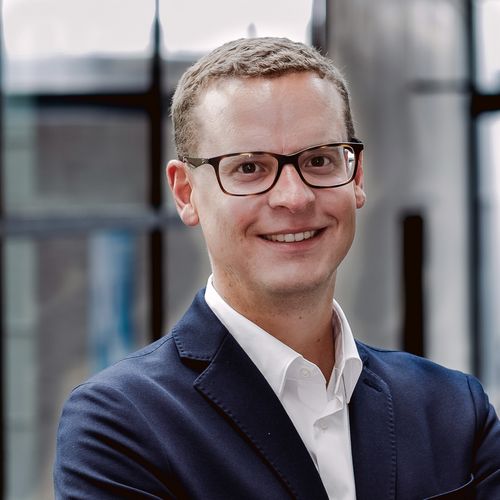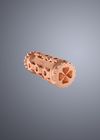Elaborated pure-copper accelerator component manufactured additively for the first time // Collaboration with the EU-funded I.FAST project to open up accelerators to societal applications // Highest quality for core component of particle accelerators // Green laser shows its advantages with copper // Presentation at Formnext
TRUMPF manufactures core component for particle accelerator for CERN-coordinated I.FAST project
Ditzingen, Geneva, Frankfurt 10 November 2022 – The high-tech company TRUMPF has additively manufactured a core component of future particle accelerators for the first time as part of the EU-funded I.FAST project coordinated by CERN. The special thing about it: for the first time, it has been possible to print this critical copper component in one piece. "This is proof that large copper components with a component height of nearly 400 millimeters can be manufactured additively with sufficient precision using our machines - or in other words: with 3D printing, we can manufacture even high-precision parts like this faster, cheaper and more energy-efficiently," says Michael Thielmann, additive manufacturing expert at TRUMPF. The high-tech company will show the particle accelerator component at the leading 3D printing trade show Formnext in Frankfurt in November.
It is a so-called radio frequency quadrupole (RFQ), one of the most complex parts of any accelerator complex. The RFQ provides energy to the beam of particles bringing them it ever close to speed of light. “Over 30 000 accelerators are currently in use worldwide, the large majority of which is used for healthcare, and industry. Additive manufacturing can help reduce the size and cost of all accelerators types, by improving and shortening their fabrication and enhancing their performance,” says Maurizio Vretenar from CERN, project coordinator of I.FAST.
CERN is looking into the advantages of the additive manufacturing
The RFQ was developed as part of EU-funded and CERN-coordinated I.FAST (Innovation Fostering in Accelerator Science and Technology) project. The aim of the strategic project is to allow Europe to develop and enhance leadership in particle accelerators for science and society. Among other things, the focus is on 3D metal printing. "It is evident that in the future, we will be increasingly using additively manufactured components within the accelerator community and our facilities" says Toms Torims from RTU, who is I.FAST Work Package coordinator for advanced accelerator technologies.
Highest quality thanks to green laser
I.FAST team of experts from CERN, Politecnico de Milano, CNRS-IN2P3, Fraunhofer IWS and Riga Technical University designed the complex component specifically for TRUMPF's TruPrint 5000 green edition. RFQ has very high demands on the manufacturing process. "This is where our TruPrint 5000 green edition comes into its own. Thanks to the green laser, we can print even the finest copper structures at a high and consistent quality, with increased productivity," says Thielmann.
Faster production reduces component costs
Until now, suppliers manufactured the RFQs for scientific laboratories like CERN and for industry at large using conventional methods. Many individual production steps such as milling and brazing were necessary. This costs time and money. Additive manufacturing eliminates many intermediate steps. For example, the TRUMPF system can build around empty spaces such as cooling channels when printing the RFQ. "With our green laser, we are also faster in the additive manufacturing of copper components than comparable systems with infrared technology," says Thielmann. The copper absorbs the green laser beam better than that of an infrared laser, making it easier to process. "We need less energy to be as fast as an infrared laser, or we can work faster with the same energy," Thielmann says. As a result, users can additively manufacture copper components more cheaply with the green laser.
Digital photographs in print-ready resolution are available to illustrate this press release. They may only be used for editorial purposes. Use is free of charge when credit is given as “Photo: TRUMPF”. Graphic editing – except for cropping out the main motif – is prohibited. Additional photos can be accessed at the TRUMPF Media Pool.
Contact person





